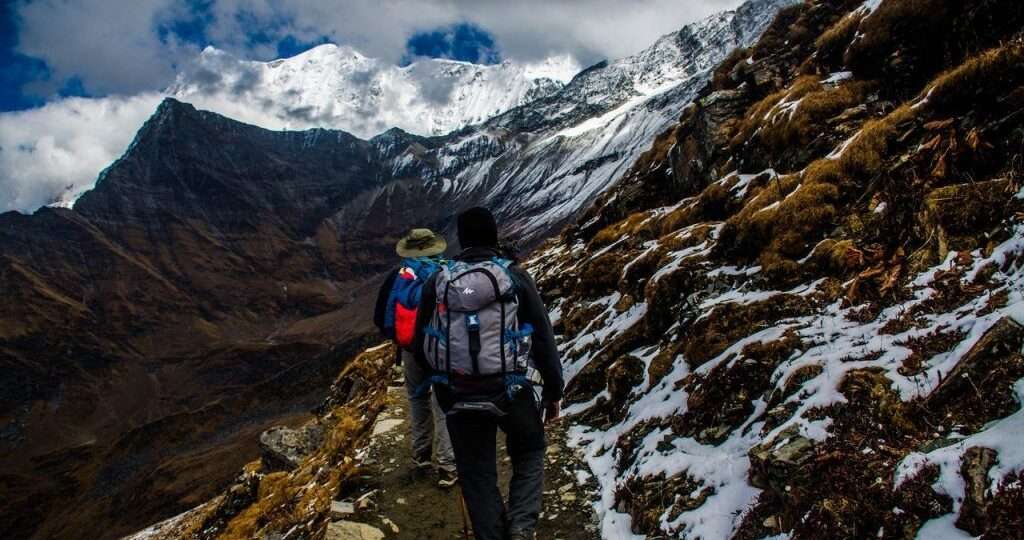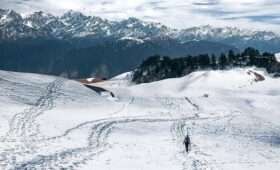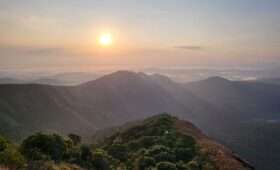It’s a big world. Let’s explore it!!
Kheerganga, which is situated at a height of approximately 2960 metres, is mostly a meadow (approx.9711 ft). It is located in a section of the greater Great Himalayan National Park. It is so well-known for two reasons. The first is its stunning location on a mountain. More than anything else, though, it is renowned for its hot water spring, which is also how it got its name.
It was formerly just a rest point en route to the Pin Parvati Pass trek. Parvati Valley eventually evolved into a quick trekking destination on its own as tourism in the area increased. The appeal of Parvati Valley was influenced by its accessibility, brief length, moderate ascent, natural beauty, and general hippie culture. You will adore it here if you prefer spending time outdoors. It is nothing less than a paradise because of the waterfalls, the lush green environs, and the Parvati River.
The Most Ideal Time To Visit Kheerganga
The perfect time to visit Kheerganga and the surrounding areas is between the long months of May and November when the weather is fantastic and good. It is recommended to avoid starting the walk during the winter months when the trail is covered in snow and the stones are more difficult to find.
Background of Kheerganga
According to legend, in Satyug, with the grace of Lord Shiva and Mata Parvati, “Kheer” came from the earth and flowed into the valley, hence the name “Kheerganga.” With Parshuram’s assistance, it was converted into water because it was anticipated that people in Kalyug might fight over it.
Water still contains components that resemble cream. It is also thought that drinking this water can treat certain minor skin issues & stomach-related diseases. From that point on, hot water began to emerge from the Satyug location where “Kheer” first appeared.
Top Kheerganga Attractions
Trek to Kheer Ganga
It is not recommended for those who are weak of heart because the around nine-kilometre, four-hour hike over narrow and difficult trails leads to Kheer Ganga of emerald green hills. Even though it presents several challenges, it yet ranks as both one of the most adventurous and one of the easiest things to do in Kasol. It is located at the very end of Parvati Valley. For the majority of the year, this area will be covered with snow, and during other months, it will just be sparsely covered. Despite this, it still makes for a slick surface and trail for anyone walking or hiking here.
Hippies from all over the world flock to this hill, which has recently been successful in luring Indians to its soil. It is a mystical paradise for them. As soon as you reach the summit, you will be surrounded by stunning sights like dense, wet, mystical clouds, apple and pine trees straight out of fairy tales, and snow-capped mountains that give the sky an almost mesmerising appearance. There is a lovely ethereal temple of Lord Siva with hot spring baths here for those who are more religious and attracted by Indian culture.
Take a stroll alongside the Parvati River
The Parvati River offers a captivating picture of the lovely Parvati Valley and the nearby forests on both sides, with pine trees soaring far above them, in contrast to the loud and voracious water of the Beas River. The rivers here have a steep gradient during the monsoon seasons, where the water gushes quickly to generate rapids that would make any keen rafter and water sports enthusiast rush for his kayak.
You have to cross a flimsy old wooden bridge to get to the other side of the river, which is kind of exciting in and of itself. Sit back and relax on one of the large rocks that line the river’s banks while you take in the sights of this stunning aquatic pride of Himachal Pradesh.
At Manikaran, a hot spring
Manikaran is the home of the natural hot springs that are sacred to the Sikh and Hindu Belief. It is situated in the Kullu district of Himachal Pradesh and is close to Bhuntar and Kasol. Manikaran is located on the Parvati River and is home to numerous Sikh and Hindu holy sites.
Numerous uses exist for these hot springs. The hotter springs are used by the pilgrims to boil rice as a tribute to the gods, while the colder ponds are used for bathing since they consider the waters to be holy. Taking a bath and coming here are undoubtedly two of the nicest things to do.
Malana
It’s a community located not far from Kasol and Manikaran. Parvati Valley provides you with things that are hard to find anyplace else in the nation, which is what makes this region unique. The trek from Kasol to Chalaal is very popular.
Kasol
It is a stunning and tranquil village situated in Himachal Pradesh’s Kullu district, some 32 kilometres from Bhuntar, the closest airport. This settlement is next to the bubbling Parvati River, where you may relax by the river and take in the serenity and calm that nature has to offer. The area’s speciality is its trekking paths, which go to destinations like Malana, Chalaal, Kheerganga, etc. You should surely go to Manikaran, which is located 4 kilometres from there. It is a haven for hikers, backpackers, and people with excessive adrenaline rushes. The world-class cuisines available at the area’s cafés will undoubtedly make your mouth wet.
Kheerganga’s accommodations
At Kheerganga, camping is the sole form of lodging provided. Though you’ll need to bring your camping supplies, you can set up your tent in a suitable area of the meadow. As a result of the littering issue, the government dismantled several of the chadar tents and dhabas that were previously offering lodging in 2018. Imagine that some natives built brick and cement structures at Kheerganga. All of these were eventually mandated to be taken down to protect the area’s environment. But not all structures were entirely taken down, as is typical for most localities. You can stay with them if you arrive and discover that these dhabas are still open. You will need to set up your tent if not.
If you didn’t want to camp alone and couldn’t find lodging, you can make the walk down to the Rudranag temple and remain there. This also has a location named Ashram that is run by Sadhus and Pandits. They provide lodging along with the food (daal, chawal, roti). You can also fill your water bottle at the Ashram’s natural spring rather than paying twice as much for packaged water.



